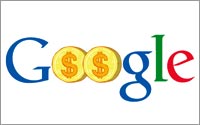Online Landscape: Marketers Should Watch Google, Macro Trends
- by Laurie Sullivan @lauriesullivan, January 18, 2013
 Checking in with a variety of ad execs provides insight into the overall state of the online ad industry. Marketers increased ad budgets during the
holidays and saw higher returns on investments, but it's not clear whether that trend will continue.
Checking in with a variety of ad execs provides insight into the overall state of the online ad industry. Marketers increased ad budgets during the
holidays and saw higher returns on investments, but it's not clear whether that trend will continue.
Virtually all checks by Doug Anmuth, J.P. Morgan analyst, yield search spend increases in the high teens to more than 20%, with improvements in cost per clicks (CPCs) during Q4 2012.
In a research note, Anmuth proposes marketers watch for slowing desktop search growth. He also suggests keeping an eye on sequential improvements in CPCs and paid list ads (PLAs) revenue contribution, as well as Google Shopping metrics, Nexus devices sales, and an update on Motorola product strategy.
Brian Wieser, senior research analyst at Pivotal Research Group, believes that roughly 80% of Google's revenue will come from small and medium enterprises paying an average of $10,000 per year on self-service campaigns. "We think this kind of an advertiser is not likely making decisions to spend money in the same way as a large e-commerce company," he wrote in a research note.
Rob Cooley, the CTO of OptiMine Software, suggests marketers keep an eye on macro marketing trends to determine transactional prices for display ads, as well as budget percentages for each media.
Knowing the percentages will assist marketers in identifying new traffic streams and whether Google PLAs cannibalize traditional paid-search ads, said Keith Wilson, VP, agency products at The Search Agency,
On desktop ads exclusive of PLAs, Kevin Lee, Didit founder, points to 4% CPC inflation. Clicks from PLAs are generally lower than regular search clicks, but vary across clients, so marketers should pay attention to any stats related to PLAs and how they contribute to Q4 revenue, as well as Google's share of mobile search compared with overall search.
Adobe Systems, in a recent study, reported that CPCs for tablets rose to 16% lower than desktops in Q4 2012, up 30% from when companies first began monitoring rates.
WordStream founder Larry Kim said that overall CPCs fell an average of 15% during the past year, which is great for advertisers, but Wall Street gets nervous. "I think falling CPCs can be good for Google, provided you take a longer-term view that providing ROI to advertisers is critical for Google’s business model to be successful in the long run," he said.
Kim also suggests paying attention to ad impression volume, as Google has been crowding out the search results pages. By his estimates, ad impressions grew by more than 60% in 2012, but marketers should keep an eye on any accelerating trends.
"That's probably not great for search engine optimization, because huge increases in ad inventory means on average organic results will get pushed even further below the fold," Kim said.
Kim said Google+ isn't Google's biggest revenue source, but he and Alex Funk, director, performance media at Covario, said to listen for any comments that would provide insight into company exec's thoughts on social media. It will provide insight into whether marketers should build out their social campaigns on Google+.
Funk said pay attention Google's social focus, overall. Chances are company execs won't comment on Facebook's advancements with Graph Search, but they will likely give some sort of direction based on their own social strategy.


